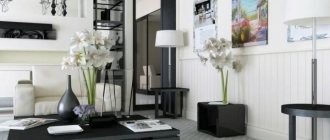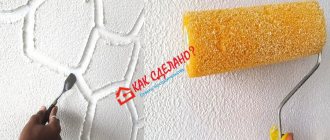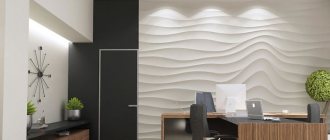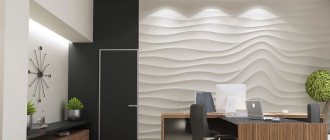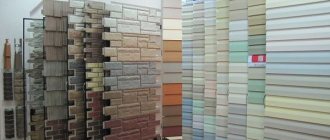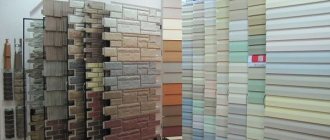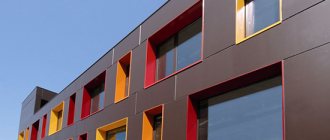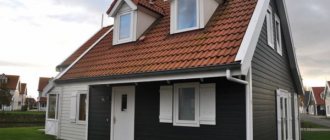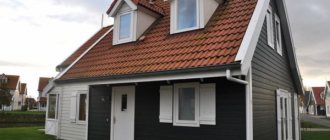The abbreviation MDF stands for medium density fiberboard. The entire production process is based on pressing finely dispersed fractions of wood chips under pressure. High temperatures promote the release of tree resin, which glues wood fibers together. Thanks to its manufacturing technology, MDF has:
- Environmentally friendly and exceptionally safe, no harmful substances or unpleasant odors are released during operation. MDF is suitable for use in residential premises and children's rooms.
- Strength, which eliminates sagging of wide shelves. The panels can withstand quite heavy loads. The ability to bend gives the furniture the desired design.
- Resistant to temperature changes and high humidity, which cannot be said about natural wood. Thanks to these qualities, the panels are used in the interior of kitchens and bathrooms.
- Immunity to mold and fungal infections, infection by microorganisms.
- Cheaper compared to natural wood and chipboard.
- Easy to install.
- Wide choice of colors.
With the help of wall panels, you can bring to life any design for the decoration of apartments and office premises. This is an excellent replacement for expensive materials. The panels can look like natural wood, plastic, textured plaster, or tiles. Covered with PVC film, the panel acquires a lacquered surface, which is widely used in furniture facades.
Advantages and disadvantages of MDF panels
Kitchen furniture covered with glossy film is very durable and designed for many years of service. In addition, panels covered with film create the appearance of a seamless coating.
The palette of colors and shades of panels opens up scope for the designer's imagination in the decoration of walls, shelving, and furniture facades.
With MDF you can create a frame with the insertion of decorative glass, mirrors, translucent plastic, eco-leather. Furniture facades finished with natural veneer look beautiful.
MDF's ability to bend radius allows you to create beautiful furniture with a smooth completion of the composition, leaving a lot of usable space in the rooms.
Furniture made from MDF does not require special care. The damaged surface of the parts can be replaced with a new one.
The disadvantages of panels include:
- ease of ignition, inadmissibility of contact with open fire;
- deformation under the influence of high temperatures, which is created by heating devices;
- instability to mechanical damage.
The hardness of the material does not allow driving nails or screws into MDF panels. All mounting holes are pre-drilled.
Let's sum it up
This is a brief overview of MDF wall panels. To make the picture more or less clear, let’s summarize what has been said into several points:
- panels have their advantages and disadvantages. So, installation is carried out faster than, for example, plastering. At the same time, they are fragile and can catch fire;
- It's very easy to find something that fits your size. So, you can choose slats that are similar to lining, which, moreover, are cheaper;
- The finish of the panels also varies. As a rule, the choice is laminated, but other options also have their own attractiveness;
- installation can be carried out in two ways: with glue and with a frame. The first option is simpler, but requires smooth and dry walls. The second is more labor- and time-consuming, but allows you to hide uneven surfaces (which may not be dry), as well as wiring and pipes. You can also lay insulation between the guides;
- all work must be carried out in accordance with calculations. So, the guides must be attached evenly and in the desired direction (vertically or horizontally), and the first panel must also be even;
- Installation of MDF panels must be carried out carefully so as not to damage either the finishing material or, especially, yourself.
If you have enough knowledge and skills, you can begin installation yourself. If not, it is better to trust the specialists: in this case, not more, but less money will be spent, since the chances of redoing the work are significantly reduced. And properly executed finishing is the key to long and high-quality service, which creates not only a beautiful appearance, but also comfort in the house.
Classification of wall panels
The industry produces several types and price categories of MDF panels.
Depending on the coating of particle boards, they are divided into:
- painted;
- laminated;
- veneered.
Painted MDF board is the cheapest. The paint protects the panels from wear, but is vulnerable to moisture. By means of painted slabs in glossy or matte finish, any design solution can be brought to life.
Laminated MDF panels are produced by covering them with polyvinyl chloride. PVC allows you to give panels the appearance of different textures, decorativeness, and a variety of color shades. Decorating the walls with panels with a slight gloss creates your own unique interior in the kitchen, living room, and bedroom.
For bathrooms, loggias, and other rooms with high humidity, moisture-resistant panels with multi-layer impregnation with water-repellent agents are used.
Veneered panels resemble wood in their appearance. During their production, the surface of the slabs is glued with the thinnest slices of natural wood. Each wood veneer has its own unique textured pattern. An excellent option for a sliding wall in small spaces would be a combination of glass and veneer panels.
Film lamination gives the panels a glossy shine. Such panels go well with the interiors of hallways and bathrooms.
It is possible to obtain an attractive wall design, provide comfort in the room and an environmentally friendly environment in it, using modern finishing material - MDF. It is produced in the form of panels. It gained fame extremely quickly due to its practicality and attractiveness; its use is allowed in rooms with extreme loads: kitchen, living room, hallway. MDF panels surprise with their variety of shades and textures; they can very accurately imitate natural wood materials, brickwork or tiles. The cost of the material is low; if you install it yourself, you can get significant savings on finishing work; during operation, it will not require particularly complex care.
Content
- MDF wall panels, their properties and advantages
- Types of MDF panels
- We purchase MDF panels and materials that will be required when performing installation work video
- Finishing with MDF panels - work order
- Methods of fastening MDF boards video
- MDF panels for the kitchen - are they suitable video material?
- Care of MDF boards
MDF wall panels, their properties and advantages
To begin with, we note that MDF panels are produced not from solid wood, but from waste, and no synthetic additives or glue are used; the technological process consists of heating wood chips to high temperatures and pressing them under high pressure. The strong connection of material fragments occurs due to the natural polymer compound released during heating - lignin.
Among the important advantages of MDF panels it should be noted:
- environmental friendliness of the material,
- Possibility of quick and easy installation,
- good thermal insulation and noise insulation characteristics,
- material strength, long service life,
- ease of replacing any piece of finishing if necessary,
- simple care that does not require the purchase of expensive household chemicals,
- the ability to hide wires, pipes, and other utilities under the cladding layer,
- affordable cost of material.
The main disadvantages of the panels are:
- flammability of the material - when laying electrical cables under the slabs, they will need to be carefully insulated in a self-extinguishing corrugation,
- inability to use in conditions of high humidity,
- fragility, the need for very careful handling when performing installation work.
Types of MDF panels
In the manufacture of panels, different methods of finishing the front side are used; accordingly, the panels themselves are divided into two types:
- laminated, the surface of which is covered with PVC film, characterized by an attractive appearance, imitating the structure of natural wood and other building materials, not prone to dust accumulation, resistant to damage;
- veneered, for finishing of which veneer of the best wood species is used.
The external finish of the panels can be shiny - glossy, or matte.
We purchase MDF panels and materials that will be required during installation work
Although installing MDF panels is not a complicated process, it will nevertheless require preliminary preparation, the purchase of the facing material itself and the necessary components. To correctly calculate the number of panels, you should first take into account the width of the space to be finished. MDF panels have the following dimensions: their standard width is 148, 190, 240 mm. Determining the required number of panels is simple: it will be the quotient of dividing the width of the wall by the width of the panel. You should purchase a little more material than was received by calculation: there may be defects, some of it will be used for scraps, and losses may also occur as a result of errors.
For work you will need to stock:
- MDF panels,
- insulating corrugation, if electrical wiring will be laid under the panels,
- screws,
- ceiling lamps,
- pendants,
- claymer,
- profiles.
Preparing the walls will consist of cleaning them from remnants of old wallpaper. You will also have to remove the baseboards. The surface of the walls must be treated with an antifungal primer, especially for rooms with high air humidity. If necessary, the walls can be covered with insulating material, for example, foam foil A. It is attached with glue, end-to-end, with the foil side facing the room.
The use of finishing corners will greatly simplify installation. Consisting of strips located with a gap of 2 mm, they are intended for fastening strips; a film corresponding to the color of the panels is applied to their surface. The formed angle very easily bends outward or inward. This point is especially important if the geometry of the existing corners is far from ideal.
To build a frame for the cladding you will need slats, preferably 20x40 mm. There is no point in using slats with a large cross-section - the panels are light in weight. In addition, slats with this cross-section are constantly available for sale in hardware stores. Fastening the slats can be done using plastic dowels and wood screws.
To fasten MDF panels to the frame bars, you will need clamps; most often they are sold complete with the panels. It will be convenient to glue the corners with liquid nails. We should especially talk about the quality of the glue - since the panels can change under the influence of moisture and temperature, the glue for them must have some plasticity. Such characteristics of the glue are usually indicated on its packaging. In addition, the glue must have a texture that allows it to be applied in a thicker or very thin layer, depending on the curvatures present on the walls. Liquid nails meet these requirements.
Installation of the sheathing should be carried out by checking the evenness of the structure, for which you can use a regular building level.
Before attaching MDF panels, you should be sure to check the quality of the installation of the sheathing - the overall appearance of the walls will ultimately depend on this. To fasten the panels to the sheathing, clamps are used.
Those who decide to decorate MDF panels with their own hands should not neglect the following recommendations:
- If you need to cut panels, it is best to use a jigsaw - the cut will be smooth and clear. Here it should be remembered that milling, sanding and drilling panels is quite simple to perform; the tools used are the same ones that are used when processing wood materials.
- In rooms with high humidity levels, it is better to make the frame from a metal profile. If the sheathing is made of wood, then it should be treated with high-quality antifungal impregnations.
- If you plan to finish the junction of the ceiling and walls with plinths, then before installing the panels around the perimeter of the room, install a fastening device. After installing the slabs, a ceiling plinth is installed in its groove.
- In places where hanging interior items are supposed to be placed, the frame will need to be reinforced with additional bars.
Finishing with MDF panels - work order
Installation of the sheathing begins from the most convex place on the wall. The bars are mounted in a horizontal direction, with a step of no more than 40 cm. Increasing the step can lead to distortion of the pattern.
You should start attaching the planks from the corner; it is advisable to make the calculation in such a way that the last panel remains intact. Before starting installation work, you can repeat the calculations or even try on how the purchased material will fit on the wall. The tenon of the first panel should be in the corner.
Along the length of each panel you will need to use 5-6 fastening clamps. They are distributed evenly and secured to the slats using a screwdriver. The opposite end is fixed using self-tapping screws.
In order for the head of the screw to sink into the material, you must first drill a hole with a diameter of 8-10 mm in the strip. The next plank is fastened with a tenon into the groove of the previous one; this procedure is repeated until the last one is installed. Each of the joints at the joints, side and top edges are secured with corners using liquid nails.
If you choose the option of laying panels in a horizontal or diagonal direction, then you should change the direction of the sheathing - its strips should be located perpendicular to the panels of the facing material.
All significant depressions found on the walls should be filled with blocks or wedges.
From below, the joints of the slabs are covered with a regular plinth; it can be secured with nails or sealed with sealant. To make it easier to attach the plinth, the bottom batten of the sheathing is fixed at floor level. The joint under the ceiling can be made with a corner or plinth.
Methods of fastening MDF boards
Methods of fastening MDF boards may be different, depending on the condition of the concrete surface on which installation is being carried out. If it is leveled and clean, then the panels can be glued directly to the wall using adhesive-sealant.
It is applied in a zigzag over the entire board, then it is pressed firmly against the wall for a couple of seconds. If excess glue comes out, carefully remove it with a spatula.
If a layer of insulation will be laid under the MDF boards or numerous utility lines will have to be hidden under it, then the best option would be to install the boards on a metal frame.
If you need to hide noticeable unevenness in the wall, it is better to use a lathing made of wooden beams - it will be stronger and more stable. In places where sockets or switches are installed, holes of the required diameter should be made using an electric drill.
MDF panels for the kitchen - are they a suitable material?
You can often find discussions about installing MDF panels in the kitchen. It is not easy to give a definite answer to this. MDF is an environmentally friendly material, it does not have an unpleasant odor, therefore it cannot cause any harm to people in the kitchen.
At the same time, the material is not moisture-resistant to the extent that would allow its unhindered installation in rooms with high levels of humidity - under the influence of water, the material may lose its attractive appearance. But it is still possible to improve areas remote from places where water is used, for example the dining area, using MDF boards. At the same time, it is recommended to mount the panels on a metal profile - wood in a humid environment can suffer from fungi and putrefactive processes. In addition, experts recommend paying attention to a relatively new version of panels with a special moisture-resistant coating.
Care of MDF boards
The period of operation of the slabs will not cause much trouble. The surface of the slabs is very smooth, it is well laminated and covered with paints. Cleaning the material from contaminants is done with a moistened soft cloth; when cleaning, do not use substances containing abrasive particles.
If during operation the peeling of the top coating of the film becomes noticeable, it can be removed using fine-grained sandpaper. Any of the damaged slabs can be replaced quite easily with a new one.
Author: Sergey and Svetlana Khudentsov
10
Panel installation
The installation of MDF panels is very specific and depends on the rooms in which they will be used.
Before installing the panels, the walls must be leveled, and the material of the wall does not matter. The panels can be attached to a perfectly flat surface without any remnants of the old finish using glue. This significantly saves time on their installation.
Wooden sheathing or a metal profile is installed on uneven walls. This allows you to do without finishing the walls.
Decorating walls with panels allows you not only to bring any design project to life, but also to hide pipes, wires, and other communications under the panels.
Preliminary preparation of walls
Before directly installing the panels on the wall, it must be prepared.
The wall must be flat so that the MDF sheet does not deform. Also, the room must dry well, otherwise the sheet placed on the glue will come off over time.
To prepare the wall for installing the panels, you will need the following materials:
- special thin jigsaw for laminate;
- several spatulas, one serrated and the other regular;
- meter;
- sealant for sealing joints and a gun for it;
Sealant and gun for it
- liquid Nails;
Liquid Nails
- to treat the wall you will need a primer;
- panel glue;
- decorative fittings to give an aesthetic appearance to the finished finish.
Once all the necessary tools have been collected, we proceed directly to preparing the wall. The first step is to clean the surface, removing the old layer of finishing.
Surface cleaning
The wall is covered with a layer of primer to smooth out any existing irregularities.
Primer
Before installation, the panels themselves are brought into the room several days before actual installation. In this way, the building material gets used to future operating conditions. As soon as the preparation of the room is completed, the stage of installing MDF sheet panels on the wall begins.
Panel care
In addition to all its positive qualities, coated MDF panels do not lose their shape, appearance, do not fade, and are easy to use. It is enough to occasionally wipe walls covered with MDF with a soft damp cloth to avoid scratches and impacts with heavy objects. The surface, protected by lamination, does not attract dust and moisture, leaving it clean and not losing its original appearance for many years.
Following these simple recommendations will allow you to maintain an attractive, fresh look to your walls and avoid further repairs for a long time.
Comparison of main characteristics
Despite almost the same composition and similar characteristics, the materials have slightly different performance properties:
- Density. This indicator is slightly higher for MDF, so it becomes stronger and more resistant to damage.
- Moisture resistance. Laminated chipboard has much better performance than its untreated predecessor. But it is also inferior to MDF in this property. However, the latter material also does not really like water. The areas that suffer the most from moisture are not very neatly sealed joints and corners. Therefore, when purchasing, you should pay special attention to the edges of the products.
- Durability. This indicator is influenced by strength, moisture resistance and ability to withstand impacts. All these characteristics are higher in MDF, so a panel made from fine wood fraction still has a chance to live longer. In addition, chipboard does not really like re-screwing screws or hammering nails.
- Environmental friendliness. Formaldehyde, which is part of chipboard, can release dangerous fumes when heated strongly, so it is considered a more harmful material. But in ordinary life it is completely safe. And yet, if there is a choice, it is better to give preference to MDF.
- Flammability. In terms of this indicator, laminated chipboard wins; it is more resistant to heat and fire.
- Price. In terms of loyalty to the wallet of the future owner, laminated chipboard is the leader, but due to its longer service life, this saving may be dubious.
Appearance. In appearance, both materials are not very different from each other. However, MDF has more possibilities for creating a more attractive design. The material can withstand milling and creating patterns, and can be finished with natural veneer. So in beauty it is not much different from solid wood.
Most often, products made from chipboard are purchased for quick furnishing of premises and subsequent replacement with higher quality items. MDF remains an investment for a longer period.
MDF for wall decoration
With the invention of MDF panels, the interior design of residential and office premises has expanded significantly. You can look up finishing options on the Internet, develop your own individual project, or contact a professional designer. The panels are suitable for any style of room decoration. For example, the geometric art deco style, which personifies freedom and a sense of celebration.
The Art Nouveau style, European Art Nouveau with wavy asymmetrical lines, where every detail resembles the scenery of a fairy tale, has a unique design.
MDF panels for children's rooms
MDF boards are safe for children's health. They are used to make backrests for cribs, tables with chairs for the youngest children, cabinets, and shelves for the children's room. But you should not cover the walls of the nursery with panels, as any scratches can easily remain on them that cannot be restored.
What is better - laminated chipboard or MDF? What is the difference and what to choose for furniture?
- Variety of colors. Both materials can have different colors: from light delicate to bright. They imitate natural and artificial stone, wood and other natural materials.
- Versatility. These 2 types of slabs are used to make furniture, they are used to decorate the façade of building structures, and they are used for interior cladding.
- Hygiene. Both boards are resistant to the formation of fungus; they will not harbor microorganisms that can destroy the base of the material.
MDF panels for kitchen
The moisture resistance of MDF panels is suitable for rooms with high humidity, such as the kitchen. Unlike other materials, moisture-resistant panels do not lose their appearance when exposed to moisture. A dining area trimmed with panels will look very attractive, but in the sink area it is better to replace the panel with tiles.
It is not recommended to install wooden sheathing in damp rooms to avoid mold and mildew. For wet rooms it is better to use a metal profile. From laminated panels you can lay out an apron over the desktop area. It is easy to match the overall interior of the kitchen. Kitchen cabinets are freely hung on MDF finished walls.
Flaws
Of course, like any building material, moisture-resistant MDF panels have several disadvantages:
- fear of severe damage from blows or scratches;
- fire hazard. MDF panels quickly catch fire, so they should not be used to decorate a work area in the kitchen where there is a high risk of fire, for example, near the stove;
- the need to first level the wall on which the MDF sheet will be attached;
- After cutting the required sheet shapes, careful adjustment in size will be required during installation on the wall, and the connecting seams must be hidden behind decorative overlays, as well as pre-treatment with sealant.
And in terms of quality, aesthetics and environmental friendliness, the material has no equal. Therefore, more and more builders are using this finishing building material when renovating premises.
MDF panels for bedroom
Unlike the kitchen, living rooms are distinguished by constant temperature and lack of moisture, and are not exposed to chemicals and aggressive agents. But, the decoration of the bedrooms must correspond to safety, hygiene, and comfortable sleep. All materials must consist of natural, breathable materials that are easy to clean, which includes MDF.
Production
To produce both materials, wood production waste is used: knots, branches, crooked trunks, trimmings.
All these materials turn into small chips, which subsequently become the base of MDF or chipboard.
And here lies the first difference between these two materials: For laminated chipboard, the chips are made quite large; for MDF, the blanks are crushed to the smallest possible size.
The second difference is related to the process of combining sawdust and shavings into a single mass:
At the same time, MDF already has a smooth and soft structure, completely ready for furniture production; laminated chipboard requires additional sanding.
Expert opinion
Strebizh Viktor Fedorovich, leading construction foreman
applying the main layer to the chipboard slab and pressing it with a stamp with a pattern; gluing the decorative layer is done in the same way; If you want to clarify something, please contact me!
MDF panels for living room
The variety of textures and color shades of MDF allows you to make any corner of the room where family members spend most of their time unique. A room decorated with wall panels is not afraid of frequent cleaning; it does not require endless repairs. Recently, it has become fashionable to highlight certain areas of rooms with a separate color and texture, especially if you choose the right lighting devices. But even in one color, the walls look very impressive, transforming the look of the entire room.
How to paint?
If necessary, you can refresh your boring interior by repainting the surface in a different color. It is worth clarifying that the procedure is quite complicated, but quite doable on your own. Here are the following stages:
- Prepare the dye. The best option for painting MDF would be to mix paint and hardener in a ratio of 1:9, respectively. To prevent the composition from hardening, regular stirring is required.
- The basis. The panels must be sanded and primed. The thickness of the primer layer should vary between 100-140 microns. The primer usually dries within 2-6 hours.
- Painting. At this stage, several layers of paint are applied, each thickness is about 80 microns. The finishing layer can be polished to give the surface a glossy finish.
- Drying. For the dye to “adhere”, it is necessary to keep the painted panel for 8-12 hours at room temperature.
If we talk about paint, then the following emulsions are suitable for MDF:
- Alkyd or oil based.
- Contains polyurethane resins.
- Nitro paint of NC category.
- Aerosols on acrylic base.
In addition, special enamels for painting MDF are sold.
MDF panels for hallway
Usually the hallway is limited in space; a lot of space in it is occupied by cabinets, hangers for clothes and shoes. Due to the tightness, the hallway walls often suffer, get dirty, and get worn down. Covering walls with MDF panels can solve these problems. The hallways look beautiful, made in the same style as the entire apartment. The decoration is not difficult, however, it looks very presentable, representing the calling card of the entire apartment. It is easy to clean from dirt, does not rub off, and fits harmoniously into the interior of the house.
MDF: what is it, scope of application and advantages of the material
- wide range of color solutions;
- high resistance to changes t 0 compared to chipboard without lamination;
- affordable cost, which makes laminated chipboard a leader among materials used in the manufacture of furniture.
For the bedroom
A person spends a lot of time in this room resting at night, so when choosing furniture, you should first of all take into account its safety for health. MDF products are more environmentally friendly, which is why they are preferable. However, to save budget, many people prefer laminated chipboard furniture. In this case, you need to look at the quality certificate of the slabs. They can have 2 classes - E1 and E2.
Furniture with class E1 is considered safer due to lower formaldehyde content.
In the production of E2 panels, a larger volume of formaldehyde compounds is used, which is why they more intensively release harmful substances into the environment.
How to treat the surface → Room decoration → How to choose the right paint → Surface treatment technologies → Leveling and finishing the walls → Selecting and applying a primer → Removal from the surface → Stretch ceilings and technologies → Reviews and testimonials
Expert opinion
Strebizh Viktor Fedorovich, leading construction foreman
However, when choosing products from a particular material, you need to take into account the upcoming operating conditions, expected power loads, humidity, and temperature effects. If you want to clarify something, please contact me!
MDF panels for bathroom
We are used to seeing a bathroom decorated with tiles. But you must admit that the tile decoration evokes a peculiar coldness in the atmosphere. The textured softness of the panels changes the entire appearance of the bathroom, creating a work of art out of it. But when choosing panels for a bathroom, you need to pay attention to their resistance to moisture. Only panels with high moisture resistance are suitable for cladding bathroom walls. Combined walls made of tiles and panels look original.
